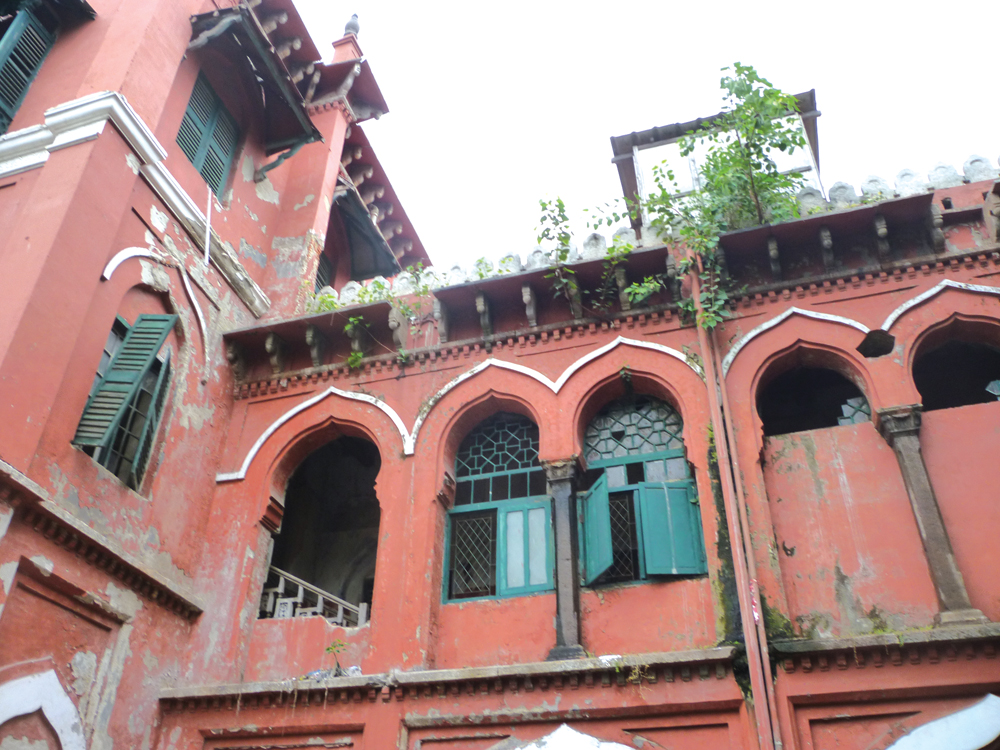
The sorry spectacle that is Chepauk Palace
|
It is now more than a year since one part of Chepauk Palace, the Khalsa Mahal, was consumed by flames. While its proposed restoration has been in a state of masterly inactivity ever since, what is worrying is that the rest of the campus continues to remain in a state of neglect, thereby giving very little hope of a better future for what is the cradle of the Indo-Saracenic style of architecture.
A recent visit only served to confirm that none of those in charge of the place has learnt from the conflagration of 2012. The same conditions that caused such extensive destruction continue to exist in the surviving wing of the palace – the Humayun Mahal. All along its outer corridor, a huge quantity of discarded wooden furniture has been stored. Inside, the place is a rabbit's warren of offices, wooden partitions, makeshift toilets and any number of files filling every available spot. Add to this, shoddy electrical wiring, some ages old and several new and exposed, and you have a deadly cocktail for another fire. And with the building being a structure that has plenty of old timber in its make-up, the extent of damage can be as much as that of Khalsa Mahal. What is worse, a part of the ceiling in Humayun Mahal has caved in and the building continues to remain in occupation!
The Khalsa Mahal presents a very sorry spectacle too. Through its arches it is possible to see the fallen beams and plenty of rubble. Even the molten plastic sheets from erstwhile temporary partitions have not been removed and hang precariously from the windows. The north-western end which housed the area of worship (below which is the old marble plaque that states that this was the residence of the Nawab of the Carnatic) has plenty of vegetation growing from its crevices. Windows are falling apart and several gaping holes can be seen. If at all there is one structure that still looks solid, it is the tower that Chisholm built to weld the two wings together.
Outside, the upkeep of the precincts too leaves much for improvement. Squatters had taken over the portico of the Khalsa Mahal and the fire appears to have not succeeded in dislodging them. There is plenty of litter all around and Government employees do not think twice before putting up posters on any of the historic walls. The entire area, though a very busy place, appears to be quite content with its squalor. Does all this give any indication of seriousness on the part of the Government to restore Chepauk Palace?
Shortly after the fire, it was announced that the building would be demolished to make way for fresh construction. Then, following an outcry in the media, this was shelved and a three-member committee was appointed to study the structure. It was pointed out even then that the committee lacked structural engineers but the Government went ahead. It is now almost ten months since the committee submitted its report, which incidentally suggested a partial reconstruction, whatever that means. This may not be entirely acceptable as the study was completed in less than a week, surely a very short period of time for a monument of such undoubted historicity.
It was then heard that the Government was wanting to make the restoration of Chepauk Palace an example of how heritage conservation was to be done. It invited 'expressions of interest' from conservation architects for working on Khalsa Mahal. It also was understood that the Government would be happy to get the restoration done on rates and methods that were not those of the PWD's. This indicated that the Government was willing to consider that heritage conservation cannot be on the same lines as new construction. All that was in June 2012. Since then nothing has been heard. Has the request for expression of interest been formally sent out? Structural engineers and architects appear to have not received it. In the meanwhile Khalsa Mahal continues to moulder.
What is evident now is that restoration is needed in all parts of the Palace including the as-of-now standing Humayun Mahal. In fact a dedicated move to document the entire Palace would be the ideal first step, mapping out what is an extremely confusing complex, built as it was repeatedly over a hundred years. With that in place, a restoration attempt would be more meaningful. Hopefully, that should happen.
|